
This is free.
Transforming forest management The precision silviculture programme
Claire Stewart, New Zealand Tree Grower November 2023.
The programme is just entering its second year of seven, and is focusing on mechanising, automating and digitising forest nursery, forest establishment and tree management operations. Eventually, the programme will develop technology and systems to increase productivity, create higher-value employment and reduce the environmental effect of operations.
Labour shortages and health and safety concerns have resulted in significant uptake of mechanisation by the forest harvesting sector over the past decade or so. Forest nursery and silviculture sectors face similar challenges with many activities little changed from the way they were 50 years ago.The precision silviculture programme was the missing link in Forest Growers Research’s research, acknowledging that research and development in silviculture has been an under-invested space for many years.
The programme is underpinned by a Ministry for Primary Industries Sustainable Food and Fibre Futures Partnership grant of $25.5 million, with additional funding and support from the Forest Growers Levy Trust, 12 forest companies and various forestry contractors, forest nurseries and manufacturers. I am the programme manager, to oversee the multiple projects happening with nursery, planting and establishment, pruning, thinning, and data and engagement.
Nursery research
The nursery work concentrates on addressing bottlenecks in tree nursery production systems. It spans containerised and non-containerised nurseries, encompassing activities from seed sowing to the deployment of trees in the forest. Three projects have been making good progress and are set to make a marked difference to the nursery sector in coming seasons

Tree and box tracking
A phone-based app to track trees from the nursery to the planting site is well on its way to being ready for use. The app, developed by technology company Integral, enables users to scan a unique GPS-linked identifier on each box of trees as it leaves the nursery, and at every stage of the journey including when the trees are delivered to the planting site.
Although tracking apps are already well-used by urban couriers, a few extra challenges have had to be overcome to develop something which is fit for its purpose in forestry conditions where consignments often total many thousands of boxes delivered to remote locations. As well as knowing the whereabouts of trees once they leave the nursery, managers will be better able to retrieve boxes for re-use.
Mechanised lifting bare root nursery stock
Manual bare root tree lifting and grading remains the norm in many nurseries. It is hard physical work and requires skill to grade trees quickly before packing. A new block-lifting machine has been developed by
Waikato nursery owner Jonathan Sudano. The machine, which will be ready for the 2024 season, can lift at least 20,000 trees an hour, the equivalent of 10 people working. It is a small-scale piece of equipment, requiring only a small tractor to operate and has very low environmental effect.

Automated seedling grading
Automated seedling grading and packing is the next stage, and an artificial intelligence based visual system is being trained to grade trees.This is likely to be applied in the packing shed initially, but later could be adapted to work during the tree lifting process.The system is being developed on a set of pass or fail rules. Decision stages will –
- Detect seedling from an image or video
- Identify relevant parts of seedling such as stem, needles, root, root hairs or dirt
- Calculate relevant measures such as stem thickness, number of stems or root kinks
- Decide pass or fail against predefined rules such as the number of stems or root dimensions
- Recommend action to machinery or human operator such as pass or fail.
Another nursery project due to start shortly will develop technology for autonomous tree stock monitoring using drone and ground-based systems.This information is critical for managers to predict how much stock will be available to the market. It will transform the previous manual task of counting seedlings and visually assessing them for growth or the presence of disease.
Precision weed control is also possible. If the monitoring system detects weeds in nursery beds, a targeted method is needed to deal with them, and work on this will begin in 2023.
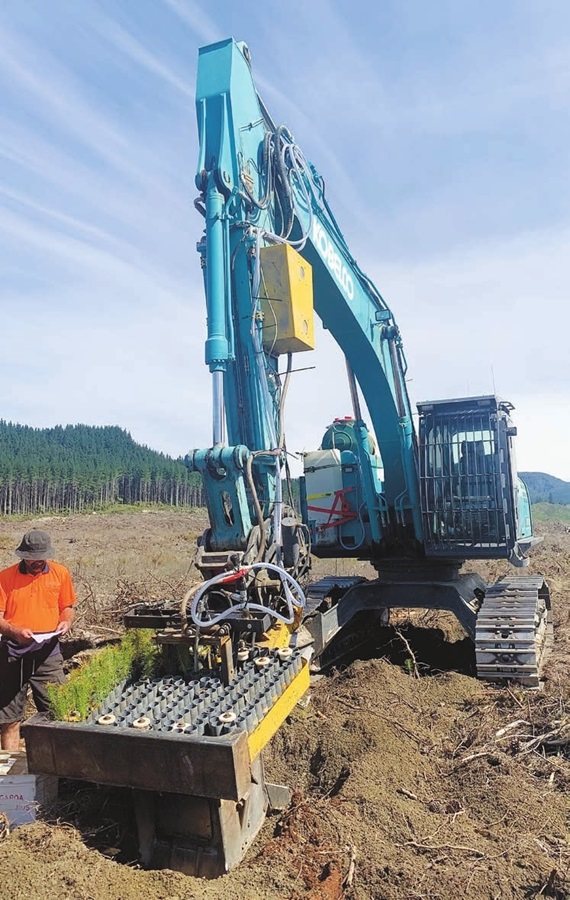
Planting and establishment
The planting workstream aims to create production- ready mechanised planting prototypes and tools for increasing planting precision and reducing chemical use. Extending the planting season beyond the traditional winter months is another aspect of this project.Two main projects have dominated this work.
Mechanised planting machinery
Mechanical tree planting is common in some countries and New Zealand contractors are already testing and adapting planting machines for local conditions. For these machines to be cost-effective they need to operate beyond the normal winter planting season. A seaweed based moisture-retaining hydrogel applied to tree roots at planting is being tested in conjunction with planting machine trials, in the expectation that it will enable planting to continue into the drier months of the year.
Pan Pac Forest Products Ltd have also been evaluating the Swedish Plantma-X mechanical planter. We are now working on an adaptation project to make the machine more suitable for work in New Zealand.
Using drone for precision spraying
Conventional spot spraying with backpack sprayers, either before planting or release spraying, requires significant labour resources.The current alternative, blanket spraying by helicopter, is environmentally debatable. Scion and technology company SPS Automation are running a series of trials in Pan Pac’s Glenmore Forest to test drone based spot spraying with the aim of developing commercially deployable technology. Other planned work in this project will assess the potential for drones in precision nutrition and vegetation management.
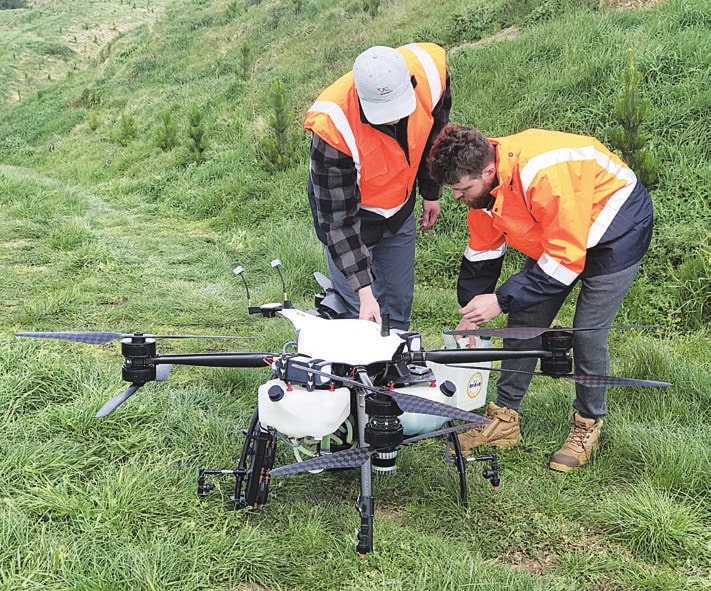
Pruning
The pruning project aims to produce prototype technology which improves the safety and productivity of pruning operations in the forest while also reducing costs. Progress is being made in two projects developing battery-powered hand pruning tools and developing mechanical pruning machines.
Battery-powered pruning
Battery-powered pruners are already commonly used in viticulture and horticulture and comprehensive trials in the forest tested one – the Pelenc battery pruner.Two participating pruning contractors found that pruning with battery-powered tools was less tiring than using conventional hand loppers, but also significantly slower, mainly because the battery-powered cutting head was not well-suited to pine branches.
The University of Canterbury mechatronics and mechanical engineering students are now rebuilding the cutting heads of the Pelenc tool, and a second Infaco one. The new designs will be ready for testing later in 2023.
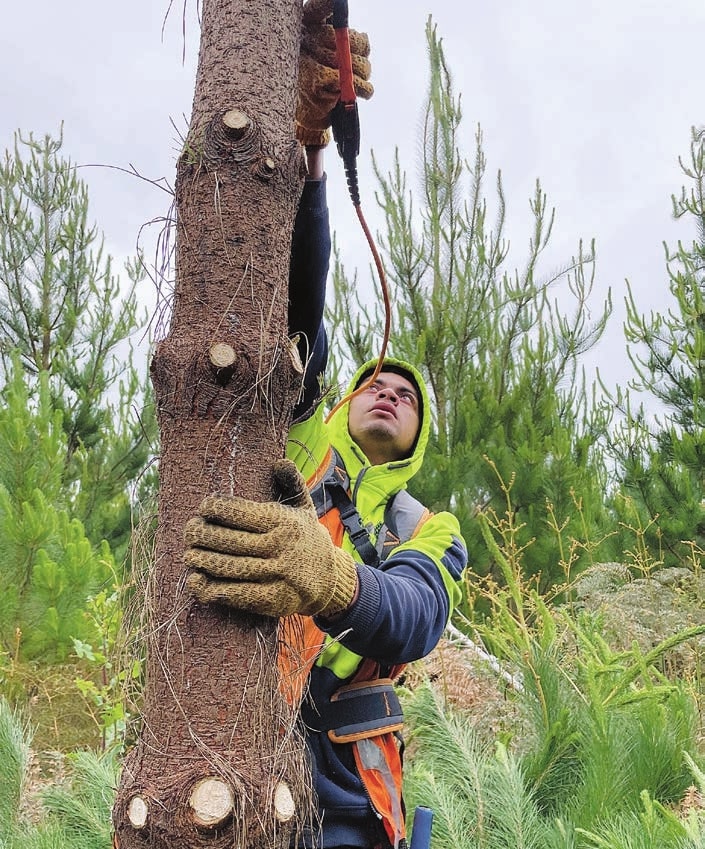
Mechanical pruning
Auckland-based engineer Marsh Hudson is working to develop a mechanised pruning machine suitable for radiata pine.The aim is to have a machine which can operate safely even on steep land, prune at heights up to 15 metres and be able to handle large branch size up to 50 mm in diameter.The prototype will be tested this November, beyond which an improved prototype is anticipated for pruning height from three to 12 metres. University of Canterbury final year engineering students continue to work on a tree-climbing pruning device, as well as working to support manual operations using battery powered devices and modifications.
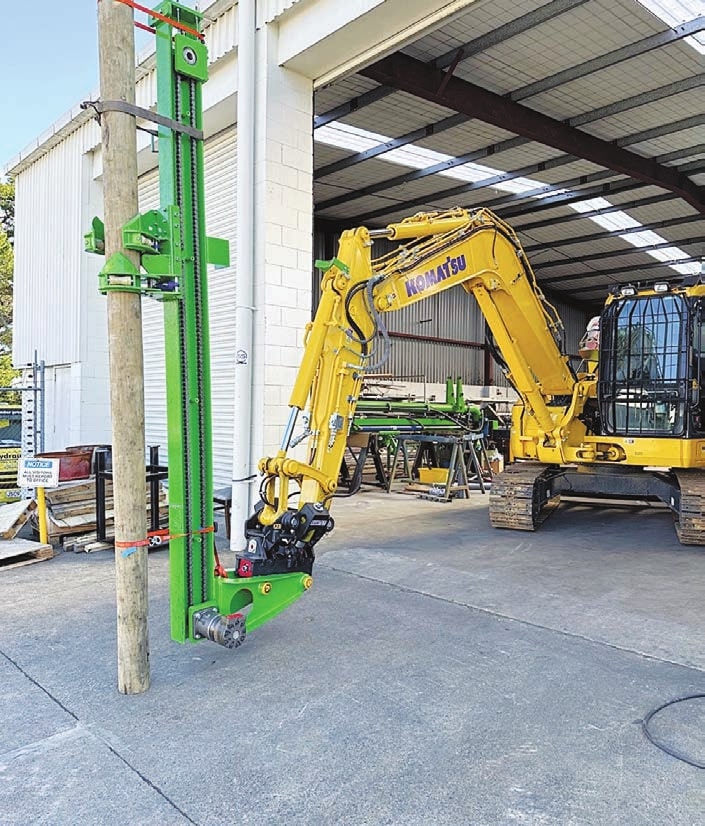
Thinning
The thinning workstream aims to develop equipment and techniques to for cost-effective mechanised thinning which reduces reliance on manual labour and creates a safer working environment.
Battery powered chainsaws
Replacing petrol chainsaws with battery powered ones would reduce missions from a typical waste thinning crew by about 6,580 litres of two-stroke fuel a year.
Operator exposure to carbon monoxide fumes would also be eliminated.Two makes of battery-powered chainsaws, a Stihl MSA300 and a Makita UC013GZ, were tested by contractors in a conventional waste thinning operation.
Management of batteries on site was revealed as the critical constraint. Each battery only lasted between 25 and 45 minutes and weighed approximately two kilogrammes each. Operators need a number of batteries for a full day’s work. Future work will look at on-site battery distribution techniques as well as systems for efficient battery charging overnight.
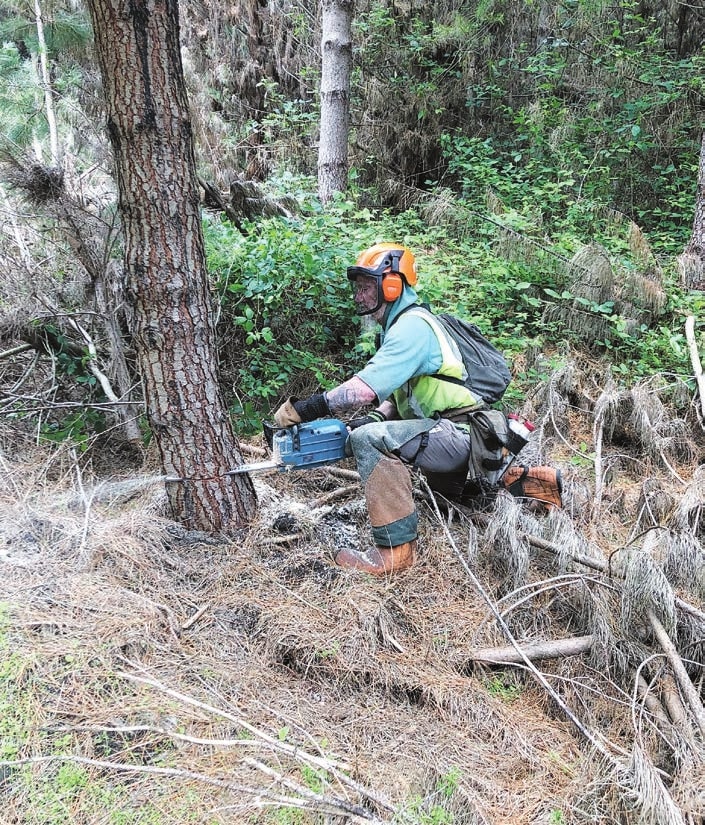
Improving thinning efficiency
TreeTools is being developed by Interpine and will enable forest managers to direct thinning crews in a better way, improving thinning efficiency and accuracy in terms of working to standardised and consistent management specifications. A Lidar file is uploaded to produce –
- A digital elevation model
- A canopy height model
- Tree peak detection including height
- Crown detection and crown mesurements
- Stocking and tree height heat map
- A summary.
TreeTools will be available for the industry to use in a and will be accessible via the Interpine website interpine.nz
Future versions will identify routes or pathways through the forest for thinning machines or manual operators to maximise their efficiency.These could operate in real time, guiding operators from tree to tree. A virtual reality training option for thinning contractors is also on the cards.
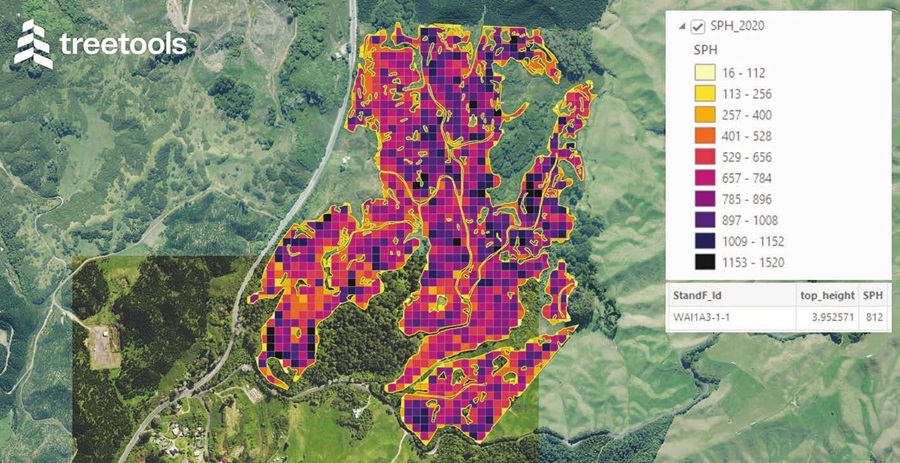
Data and engagement
The data workstream focuses on implementing data standards and governance practices for precision activities.We want to release the value of interconnected data which will underpin the entire programme’s success.We are developing new silvicultural standards and will need a comprehensive data strategy. Identifying the value of knowing where an individual tree is in a forest is one concept under review.
The engagement workstream is dedicated to encouraging involvement with Maori to co-design innovative ways which provide direct value and opportunities for Maori.This includes a new partnership with Nga Pou a Tane to help Maori aspirations in the programme.
As the precision silviculture programme enters its second year, there is an array of projects looking at the main challenges and opportunities in the industry. Project reports are available on the Forest Growers Research website fgr.nz. The programme is managed in close collaboration with Forest Growers Research other multi-year partnerships, with many links and mutual research benefits. For more information on any of the projects covered here, email claire.stewart@fgr.nz
Claire Stewart is the programme manager of the precision silviculture programme.
 Farm Forestry New Zealand
Farm Forestry New Zealand